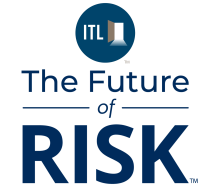Artificial intelligence is set to transform the insurance industry. According to one study, 99% of insurers are either already investing or making plans to invest in Generative AI (GenAI).
They're targeting ways to streamline operations, improve decision-making and enhance customer service. The opportunity is clear: One study found that GenAI could reduce payouts by between 3% and 4%, and drive a 20-30% reduction in loss-adjustment expenses in claims alone.
Yet intent does not guarantee success. Insurers are not investing in AI to secure small gains, but that is often what happens because they start with off-the-shelf AI models.
The limitations of AI models
These services deliver incremental benefits, and there is certainly value in that. What they do not offer is a fundamental change in how firms work and operate.
The reason is that these off-the-shelf models are often positioned as quick, plug-and-play services that need little time to integrate. They might work well on simple, repetitive tasks such as answering internal queries but struggle on more nuanced, complex work such as underwriting, claims processing, and fraud protection.
At the heart of these limitations is data quality. Generic solutions are trained on generic datasets lacking industry- or use case-specific context, and as a result, deliver generic responses. They also risk providing outdated and incorrect information, hurting customer satisfaction and increasing compliance and regulatory issues.
Can models be improved?
There are ways to tackle these challenges. Techniques including retrieval augmented generation (RAG) and fine-tuning do allow insurers to adjust performance:
● RAG involves engineering prompts using specific knowledge to provide context
● Fine-tuning deploys private data to teach models how to respond to prompts
These approaches can enhance accuracy, but they require insurers to have high levels of internal AI literacy. The success of RAG and fine-tuning efforts is closely linked to having subject matter experts who can work on prompts, know the right data to include in training, and review output quality. In other words, it is resource-intensive for relatively little gain; AI remains an assistant to human decision-making.
Ultimately, even off-the-shelf models that have been enhanced through RAG or fine-tuning are only transformative at an application or service level. They can accelerate processes, but what can be achieved is limited by what humans themselves can accomplish.
The real transformation – AI agents
The real opportunity is found in agentic AI, software that performs tasks autonomously with at most limited human intervention. Agents make decisions, plan and learn from new information to complete work defined by clear instructions, delivering focused and precise execution.
They adapt and learn in real time, rather than needing to be retrained regularly. As such, once deployed, they remain aligned with current business needs and industry conditions, ensuring reliability and adaptability.
What sets agents apart from off-the-shelf models is that as well as completing the task, agents can redesign processes to work more effectively.
For instance, a customer has a car accident and needs to make a claim. The traditional process will have been shaped by a human workforce and will likely involve multiple steps, all of which require different information, with no chance of progressing until the previous step has been completed. As a result, a decision can take weeks, if not months, as all parties are consulted.
With an agent-led process, the same information will still be required, but it could all be gathered simultaneously from multiple sources and assessed in real time. It does not matter whether it is incident details, imagery, vehicle value, historic claims data, or the cost of a replacement; the agent can continually gather and review to make a decision in days if not hours.
Complete transformation with full-task automation
This is full-task automation. It allows insurance companies to not just get more work done, with higher levels of accuracy, but to transform how they operate in ways in which they previously never had the time or resources to do. They can:
- Scrutinize every claim like it was the only one they received that day
- Predict risk with deeper levels of accuracy
- Personalize products to a degree that makes the customer feel like they have been created just for them
- Be confident that the potential for fraudulent claims is hugely reduced
AI agents will have a truly transformative effect on insurance, but only if they are deployed at scale. One agent is a pilot; hundreds is a transformation.
To achieve that requires an enterprise-wide AI infrastructure that supports autonomous operations. This needs to ensure that AI agents can integrate with existing systems, operate autonomously, and allow subject matter experts to configure AI agents according to their specific business objectives.
Investing in hundreds of agents may seem like a huge investment, but it is not; right now, agents are good enough to start taking ownership of simple tasks, and they are continually learning. A year from now, they will be 10 times better at 1/100th of the cost. The cost barriers to entry are dropping dramatically.
That also means that competitors will be using them. Can a firm compete against other providers that deploy agents alongside human teams of specialists?
Unlocking operational transformation
AI models, procured off the shelf, will not transform insurance. They will drive incremental benefits, and if deployed at scale those benefits may improve the bottom line by a percent or two. They will not completely overhaul processes that have been designed and built to accommodate the limitations of human workforces.
Only agents can deliver the operational level transformation insurers need, when AI no longer assists teams but takes full responsibility for tasks. By adopting autonomous agents, insurers will be in a stronger position to unlock the opportunities AI offers.






